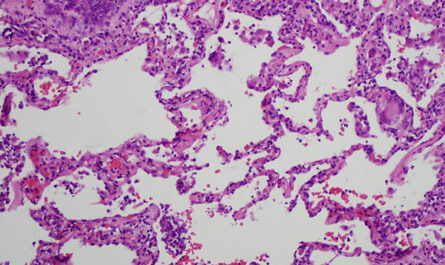A) Market Overview:
The global Oligonucleotide Synthesis Market is estimated to be valued at US$2,874.1 million in 2020 and is expected to reach new heights with a CAGR of 11.3% during the forecast period from 2020 to 2027, according to a report by Coherent Market Insights. Oligonucleotide synthesis plays a pivotal role in various fields such as pharmaceuticals, clinical diagnostics, research, and genetic engineering. It involves the chemical synthesis of short fragments of DNA or RNA, enabling the production of customized genetic tools for applications such as gene therapy, drug development, and molecular diagnostics.
B) Market Dynamics:
The market dynamics of the Oligonucleotide Synthesis industry are driven by two key factors: advancements in technology and growing demand for synthetic oligonucleotides.
1. Advancements in Technology:
Constant technological advancements have revolutionized the landscape of oligonucleotide synthesis. Automated synthesizers, high-throughput platforms, and novel chemistries have significantly improved the synthesis speed, accuracy, efficiency, and yield of oligonucleotides. These advancements have resulted in reduced costs and turnaround time, making customized oligonucleotides more accessible to researchers and clinicians.
For example, companies like Integrated DNA Technologies (IDT) and Twist Bioscience have developed innovative platforms utilizing microarray-based parallel synthesis and silicon chip-based DNA synthesis, respectively. These technologies enable large-scale synthesis of high-quality oligonucleotides with greater precision and reproducibility.
2. Growing Demand for Synthetic Oligonucleotides:
The increasing demand for synthetic oligonucleotides is driven by their numerous applications in research, therapeutics, and diagnostics. Synthetic oligonucleotides serve as essential tools for gene silencing, gene editing, CRISPR-Cas9 technology, and PCR amplification. They are also used for the development of DNA/RNA-based therapeutics, such as mRNA vaccines and antisense oligonucleotides.
Moreover, the rising prevalence of genetic disorders, infectious diseases, and cancer has fueled the demand for precise and reliable molecular diagnostic tests. Oligonucleotides are vital components in PCR assays, fluorescence in situ hybridization (FISH), and next-generation sequencing (NGS), enabling accurate detection of genetic mutations and variations.
C) Market Key Trends:
An emerging key trend in the oligonucleotide synthesis market is the adoption of AI and machine learning algorithms to optimize the synthesis process. These technologies can enhance the speed, efficiency, and yield of oligonucleotide synthesis by analyzing vast amounts of data and predicting optimal combinations of reagents and protocols. For instance, companies like Synthego and NuProbe are harnessing AI algorithms to develop advanced oligo design tools, enabling researchers to design highly specific and efficient CRISPR guide RNAs and DNA probes.
D) SWOT Analysis:
Strength:
Oligonucleotide synthesis offers high accuracy, customizability, and scalability, providing researchers and clinicians with precise genetic tools for various applications.
Weakness:
The high cost of oligonucleotide synthesis can still be a limiting factor for small research laboratories and startups with limited budgets.
Opportunity:
The increasing collaborations between academic institutions, pharmaceutical companies, and contract research organizations (CROs) offer significant growth opportunities for the oligonucleotide synthesis market. Such collaborations pave the way for the development of novel therapeutics, diagnostics, and research tools.
Threats:
Regulatory challenges related to safety concerns, intellectual property rights, and ethical considerations may impede the growth of the oligonucleotide synthesis market. Additionally, the presence of alternative technologies like gene editing using viral vectors or protein-based approaches may pose a threat to the adoption of synthetic oligonucleotides.
E) Key Takeaways:
The global oligonucleotide synthesis market is expected to witness substantial growth, driven by advancements in technology and the increasing demand for synthetic oligonucleotides. With a significant CAGR of 11.3% during the forecast period, the market presents immense opportunities for both established players and new entrants.
In terms of regional analysis, North America is anticipated to dominate the market, owing to the presence of key players, robust R&D infrastructure, and high adoption rates of advanced technologies. However, Asia Pacific is poised to be the fastest-growing region, driven by increasing research activities, rising healthcare expenditure, and strategic initiatives by market players.
Key players operating in the global oligonucleotide synthesis market include Thermo Fisher Scientific, Sigma-Aldrich Corporation, GE Healthcare, Integrated DNA Technologies (IDT), and Twist Bioscience. These players are continuously investing in R&D activities to develop innovative technologies, expand their product portfolios, and strengthen their market presence.
In conclusion, the oligonucleotide synthesis market holds significant promise in unlocking the potential of customized genetic tools for research, diagnostics, and therapeutics. Advancements in technology, increasing collaborations, and the rise in genetic disorders are key drivers propelling market growth. The integration of AI and machine learning algorithms and the need for precise genetic tools will shape the future of this market, offering immense opportunities for stakeholders across the globe.



